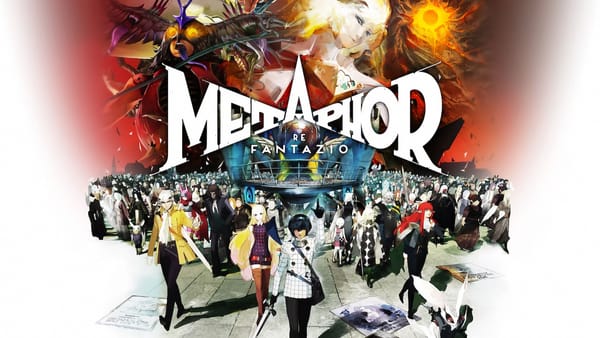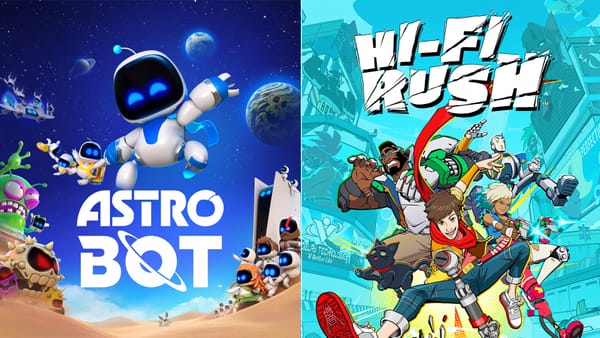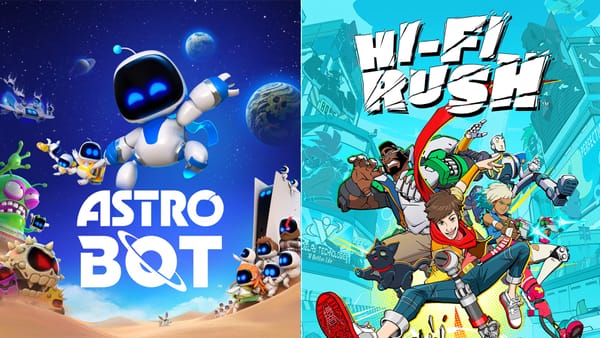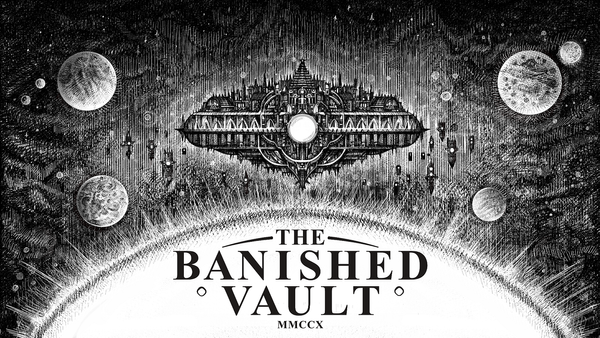Chrono Cross, Majora’s Mask, and the flow of time
What’s left when we leave the loop?
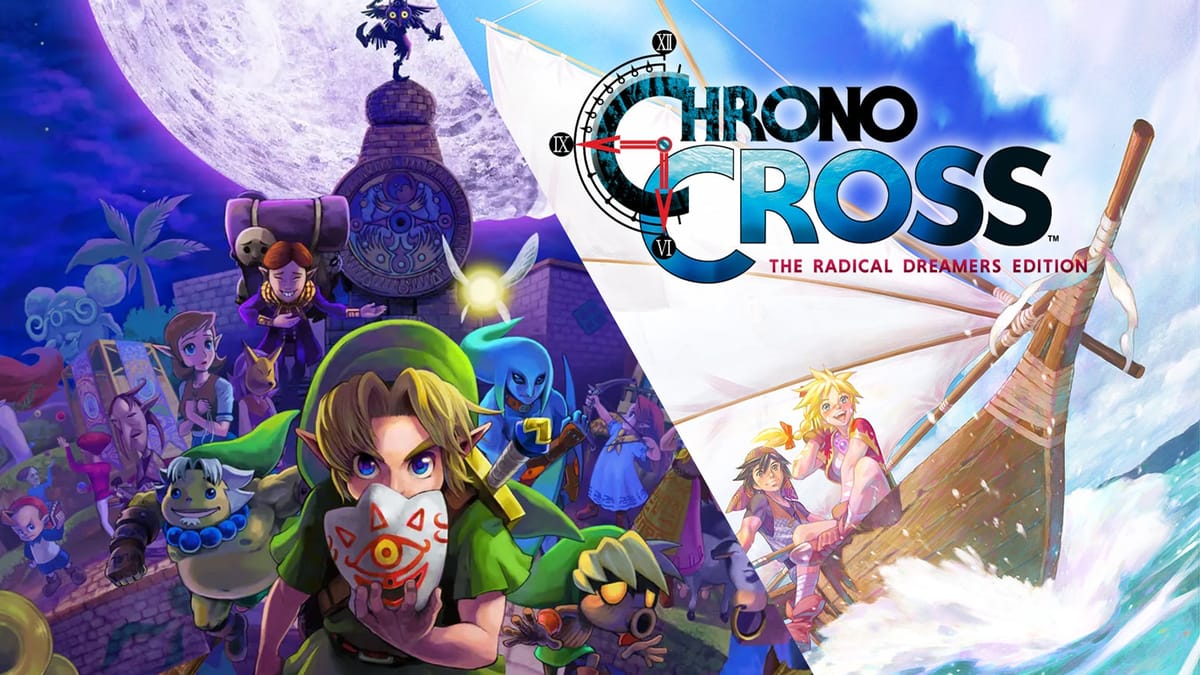
The calendar flipped from 1999 to 2000, and the new millennium brought Chrono Cross and The Legend of Zelda: Majora’s Mask, sequels to two of my favorite games, Chrono Trigger and Ocarina of Time. It was a big moment for 10 year old me.
These two games were divisive and debated, never reaching the stratospheric esteem of their predecessors, but their somber tones and side-character focused stories deeply affected me, solidifying them in my young mind as triumphs over the originals and new favorites. (Along with Donkey Kong Country 2, the only perfect game ever made). 24 years have passed, but still, they’ve never strayed too far from my thoughts.
When Chrono Cross made its way to modern platforms in 2022 with The Radical Dreamers Edition, I was able to revisit it with the added perspective of two decades of life. I came in with different questions than I did at 10. What was it that made this game fundamentally different from Chrono Trigger? And why the hell was it making me think of Zelda?
Chrono Trigger was notable not least of all for its immaculate polish and an adventure that took players through space and time. That polish was possible in part because of the simplicity of its story. Chrono Trigger asks: What if the world ended? What if the worst possible thing happened? In typical RPG fashion, the answer was: We have to go back in time and stop it, of course!
Its sequel, by contrast, frustrated some players with its sometimes inaccessible story and by asking more complicated, personal questions. What if the world were better for some people but worse for others? What if it wasn’t exactly better or worse, just different? If we had made different choices in our life, where would we be now?
Instead of traveling through time, Chrono Cross takes us between two mirrored worlds that diverge when the central character, Serge, drowns as a child. We start the game in the world where he was saved from drowning, but are quickly transported to that other world, where Serge discovers he died. It’s in this distant world that we begin our adventure, learning about our new surroundings while trying desperately to return home. As we do, we find that this reality is different in more ways than Serge’s absence alone. That, actually, the world we are so desperate to return to is in some ways worse off than this other world. For example, the bustling capital city we first come to know in the other world, brimming with festive energy, is occupied in our home world by an invading force from the distant mainland and has been put under martial law.
Chrono Cross is all about such dualities, about the two sides of a coin. While the main plot focuses on abstract and otherworldly parallels (Lavos/Gaea, FATE/Dragon God, Humans/Reptites, Kid/Harle), the real joy and sorrow of the game lies in the side characters. We get glimpses of their lives, which we then see contrasted against their counterparts in the other world.
Fargo is the captain of a ship who loses his wife in both realities. In one, the loss causes him to name his boat after her and turn it into a cruise ship. In the other, he turns it instead into a pirate ship and becomes the scourge of the seas. It’s the pirate version of Fargo who has enough fire left in his heart to join our quest to save the world, delivering a harsh rebuke to the other version of himself, whom he accuses of dishonoring his wife’s memory by moping around and running a floating casino.
Van is another character who might join our quest. He is a young man who lives in poverty with his painter father who can’t sell any of his works. Van is frustrated trying to scrape enough money together to keep a roof over their heads while his father paints whimsical works, so he joins the party in hopes of finding riches. We take him to the other world, where he finds a version of his father who has business savvy instead of artistic sensibility. This father lives in a mansion, and in that mansion is another version of Van—one who paints to express his lonely feelings, neglected by a father who is too busy running a business to make time for his son. The two Vans give one another a word of encouragement. They both long for what the other one has. Neither one of them is happy, and perhaps recognition of that gives them some strength to soldier on with what they have instead of what they wish they had.
The parallel worlds are not only used for vignettes, however. Chrono Cross leverages its parallels to demonstrate the consequences of the player’s actions, to give us a clear idea of the power of our agency. At one point in the game, Serge’s traveling companion, Kid, becomes poisoned by weaponized hydra venom. A doctor could make an antidote from a sample of venom, if only the hydra’s hadn’t gone extinct from poaching. Their absence threw off the whole ecosystem of the marsh, sending it into decline. In the other world, however, such is not the case. A single hydra remains and maintains equilibrium in the marsh. But to save Kid, a sacrifice is needed. The game asks us: Will we exterminate the last hydra and doom the marsh to the same miserable state in both worlds? Or do we let Kid perish and continue on our quest to stop the villains? In many games that offer player agency like this, the consequences of the choices can often be ambiguous. But Chrono Cross puts it in front of us and makes sure we understand what we’re choosing. One, or the other.
The emphasis on consequences is shared between Cross and Trigger in their obsession with endings: Both games have more than 10 different conclusions depending on when you choose to defeat the final boss. Depending on what quest housekeeping you’ve completed when you choose to end the spacetime paradox created by Lavos, history can radically change, so much so that we can witness a world dominated by Reptites instead of humans, among other variations. Chrono games demands us to be clearheaded about the tradeoffs of any choice we make in life, and bear witness to the aftermath. They want us, in short, to live.
Majora’s Mask, by contrast, wants us to die.
Like the Chrono games, Majora’s Mask gives us many endings. Many, many endings. Because the game keeps ending. Over. And over. And over.
Instead of having two alternate worlds like Chrono Cross, Majora’s Mask is itself the alternate world, featuring many of the familiar characters we’ve met in Ocarina of Time living reimagined lives in the rabbit-hole world of Termina. (Termina, also happens to be the name of the capital city in Chrono Cross, leading me to believe that someone is messing with me, personally.)
Ocarina of Time, like Chrono Trigger, took a simple premise (hero has to go on quest to save princess) and perfected it. Majora’s Mask, meanwhile, trades in a quest for a loop. Link experiences the same three days again and again, and it ends the same way each time: the moon crashes into Clock Town and everyone dies. You repeat this cycle ad infinitum until you figure out how to avert the disaster. This is how Majora’s Mask poses its version of the What if? question. What if we do this thing differently this time around? What will change? What if we do something else now?
There are fewer dungeons in Majora than your average Zelda game, with the focus instead placed on observing the daily patterns of the people of Clock Town. By getting to know the town folk, by learning their struggles and helping them, we get knowledge and tools that will help us on the next cycle. Of course, whoever we helped in order to get those tools will go back to being un-helped at the beginning of the three days. It’s tragic to spend an entire three-day cycle painstakingly helping two star-crossed lovers, Anju and Kafe, beat the odds and find their way to each other, to watch them spend their final minutes together before the end, only to reset and see them back in their starting places, separated and completely ignorant of the heartbreaking journey we just took them on. It’s a heartbreak we’re forced to endure again and again as we constantly reset the clock in order to complete our journey.
The lesson seems to be that some tragedy is inevitable, whether we intervene or not. Sure, we can help the two sisters on the ranch save their milk shipment from being stolen, but regardless of whether we do, when we make our way to their house as midnight draws near on the final day, we witness the older sister making a special allowance for her younger sister to drink the “adult” (read: alcoholic) milk, since she knows there isn’t going to be a tomorrow.
And let’s not forget that all of Link’s transformations are death masks, made from restless spirits. We’re not turning into any old Zora, Goron, or Deku scrub; the guises we assume are of specific individuals who met untimely deaths, and by taking their appearance, we gain not only the abilities needed to take care of their unfinished business, but to interact with and give some measure of closure to their bereaved relations. When people say that Majora’s Mask is dark, this is what they mean.
Chrono Cross and Majora’s Mask have a lot of odd similarities. The two seem to resonate with each other in more than superficial ways. I wonder what it was about the year 2000. Why did they both use the name Termina? Why did the center of the Frozen Flame kind of look like Majora’s Mask? Beyond time traveling and the existence of alternate worlds, both games focus heavily on side characters and side quests, which is where they both achieve their emotional resonance. Chrono Cross has 45 recruitable characters, many of them having parallel versions of themselves that we can learn about or interact with. Similarly, Majora’s Mask has 28 masks, most of them earned from interacting with, helping, or in some cases exorcizing some person. We connect with someone to get the masks, just as much as we would by recruiting characters into a party.
Not every character in Cross is as deep as you’d like. (Poshul is a dog. That’s about it.) And not every mask in Majora’s is rooted in meaning. (The bomb mask is in a random chest, and it blows Link’s face up when he wears it. Cool.) But that’s okay because, for every miss, there’s still plenty of hits, and they hit hard.
Their major plot beats bear similarities, too. The final bosses (Majora and Lavos) are parasites on the bodies of lost and lonely youths (Skull Kid and Schala). You can confront both not only at the end of the game, but pretty much at any point in your journey. (Although you won’t stop the moon from falling without collecting the masks of all four giants, and you won’t stop the Time Devourer for good without having collected the seventh element. Games do be gaming.)
Even as a 10 year old, I recognized the sadness in these games, of seeing people going about their lives, then seeing how things worked out differently in another life, or how things un-worked out when the clock wound back. I think it was this sadness that cemented these games in my mind for two decades to come. I didn’t have a better word for it than “sad” at the time, but the complexity of the emotion wasn’t lost on me. Looking back on them now with a whole lot of life decisions made between 2000 and 2024, I have more words for how these two games make me feel. Wistful. Nostalgic. Solaced. Bittersweet. They aren’t sad games; they are What if? games. What if I had gone to a different school? What if I had transitioned 10 years earlier? What if I hadn’t played these two games in my childhood? Unlike Link and Serge, I won’t ever get a look at the alternate timelines that have spun off from my choices, but I know that no matter what choices I might have made differently, none of them would have stopped me from asking What if?
Maybe that’s the point. There’s always going to be a What if? There’s always going to be uncertainty. But for all their myriad endings, these games both, in fact, have one absolute ending: when you turn the game off. Then, it’s just you, in the present, with your one and only self. The games aren’t real; they are merely wonderings of the imagination. Alternate timelines aren’t real; they are reflections on what the consequences of our actions have been. I think that’s what these games left me with so many years ago: a curiosity about the way actions affect others, exercises in empathy, an understanding that everyone has only the exact circumstances that the present finds them in to work with. That loops and alternate timelines are fantasies. That we only have the now, so we must make good use of it.

